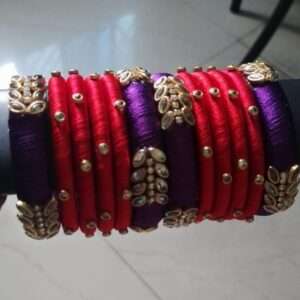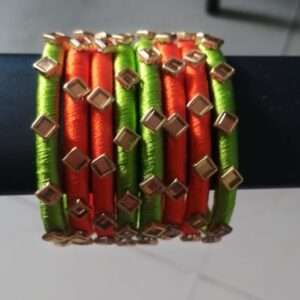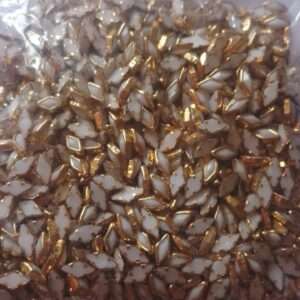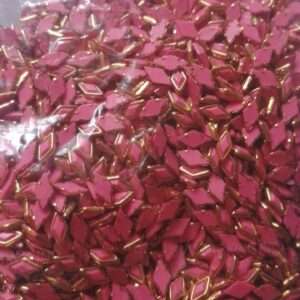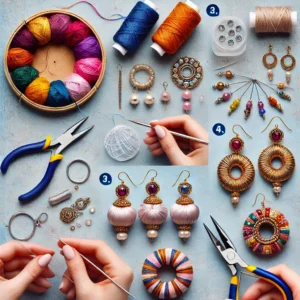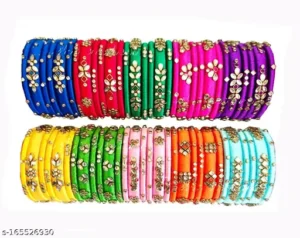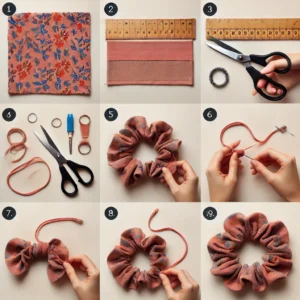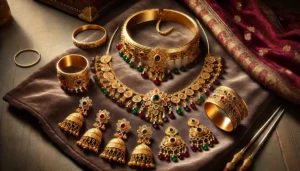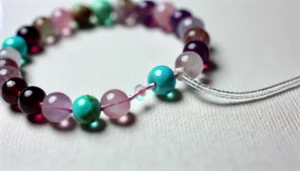Home » Posts tagged 'Indian ornaments'
Tag Archives: Indian ornaments
Discover the Rich Significance Behind the Ornaments Worn by Indian Women!
Explore the various traditional ornaments worn by Indian women and their cultural significance. From Maang Tikka to Anklets, discover the beauty and tradition behind each piece.
Indian culture is renowned for its rich tradition of jewelry and ornaments, which are often seen as symbols of beauty, status, and spirituality. Indian women have adorned themselves with various types of jewelry for centuries, each piece carrying cultural, religious, or social significance. The types of ornaments vary across different regions, but they share a common essence of elegance and heritage. This article explores various traditional ornaments worn by Indian women and the significance behind each piece.
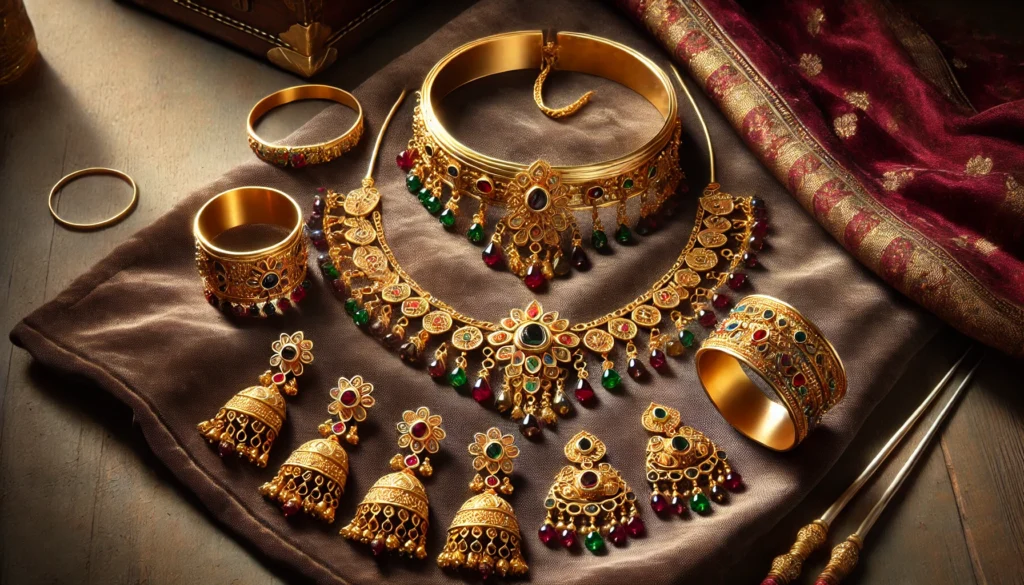
1. Maang Tikka
Description: Maang Tikka is a forehead ornament worn along the parting of the hair, extending to the forehead. It typically consists of a chain with a pendant, and in some cases, a small hook at the back to secure it to the hair.
Significance: Maang Tikka is considered a symbol of feminine power and protection. It is usually worn during weddings and festive occasions. In Hindu tradition, the center of the forehead, where the pendant rests, is believed to be the ajna chakra, or the third eye, representing wisdom and power.
2. Earrings (Jhumkas, Studs, Chandbalis)
Description: Earrings come in various styles, such as Jhumkas (bell-shaped), Studs, and Chandbalis (moon-shaped). They can be made from gold, silver, pearls, or gemstones.
Significance: Earrings are believed to be an important part of a woman’s adornment in India. Jhumkas and Chandbalis are especially popular in South Indian and Mughal-inspired jewelry. They are worn to enhance facial features and are often seen as a mark of traditional beauty.
3. Nose Ring (Nath)
Description: The Nath, or nose ring, is a traditional ornament worn on the nose. It can be a small stud (Phulli) or a large ring (Nath) adorned with pearls or stones, sometimes extending to the ear with a chain.
Significance: The Nath holds immense cultural importance, especially in Indian weddings, where it symbolizes a married woman. It is also considered a mark of beauty and femininity. In Ayurveda, the left nostril is believed to be linked to reproductive organs, and piercing it is said to ease menstrual and childbirth pain.
4. Necklaces (Haar, Mangalsutra, Choker)
Description: Necklaces come in various types, such as the long Haar, the sacred Mangalsutra, and the short Choker. They can be crafted from gold, silver, pearls, or other precious stones.
Significance: Necklaces symbolize prosperity and marital status. The Mangalsutra, a black-beaded necklace worn by married Hindu women, is particularly significant as it represents the husband’s longevity and the sanctity of marriage. Chokers and Haars, on the other hand, are worn for their ornamental and aesthetic value.
5. Bangles (Kangan, Chuda)
Description: Bangles, known as Kangan or Chuda, are worn around the wrists. They are typically made of gold, glass, lac, or other metals and are available in various designs, from simple to heavily embellished.
Significance: Bangles are a symbol of prosperity, marital status, and good fortune. For married women, especially in North India, wearing red and white bangles (Chuda) is considered auspicious. Bangles are also believed to enhance blood circulation due to the constant friction against the wrist.
6. Armlets (Bajubandh)
Description: Armlets or Bajubandhs are worn around the upper arm. They are usually made of gold or silver and adorned with gemstones, pearls, or intricate designs.
Significance: Armlets are worn to symbolize strength and protection. In Indian culture, they are often associated with divine protection and are worn by brides and dancers during special ceremonies and performances.
7. Rings (Anguthi)
Description: Rings, or Anguthis, are worn on the fingers and come in various designs, from simple gold bands to elaborate pieces with gemstones and diamonds.
Significance: Rings are often associated with marital status, especially the engagement and wedding rings. In Indian culture, different fingers have different significances, and rings are believed to enhance particular qualities, such as creativity, love, or prosperity.
8. Waist Belt (Kamarbandh)
Description: Kamarbandh or waist belts are worn around the waist and can be made of gold, silver, or cloth adorned with beads and stones. They often have chains, tassels, or hanging charms.
Significance: Kamarbandhs are worn to accentuate the waistline and add grace to the woman’s gait. Traditionally, they are believed to help maintain posture and balance while walking or dancing. They are a popular accessory during weddings and classical dance performances.
9. Anklets (Payal) and Toe Rings (Bichiya)
Description: Anklets, or Payals, are worn around the ankles, often accompanied by small bells that make a melodious sound. Toe rings, or Bichiyas, are worn on the toes, usually the second toe, and are often made of silver.
Significance: Anklets are considered to attract positive energy and ward off negative influences. Toe rings are traditionally worn by married Hindu women and are believed to enhance reproductive health by applying pressure to specific nerve points.
10. Hair Ornaments (Jadai Billai, Veni, Parandi)
Description: Hair ornaments, such as Jadai Billai (hairpins), Veni (flower decorations), and Parandi (braid tassels), are used to adorn hairdos. They are often crafted from gold, silver, or colorful threads.
Significance: Hair ornaments are a significant part of bridal jewelry in India, symbolizing beauty and femininity. They are also used in classical dance forms to accentuate movements and enhance the overall aesthetic appeal.
Ornaments worn by Indian women are more than just decorative accessories; they carry deep cultural, religious, and social significance. From the Maang Tikka that represents wisdom to the Toe Rings believed to promote health, each piece of jewelry is steeped in tradition and meaning. Indian jewelry not only enhances a woman’s beauty but also connects her to her cultural roots and spiritual beliefs.

